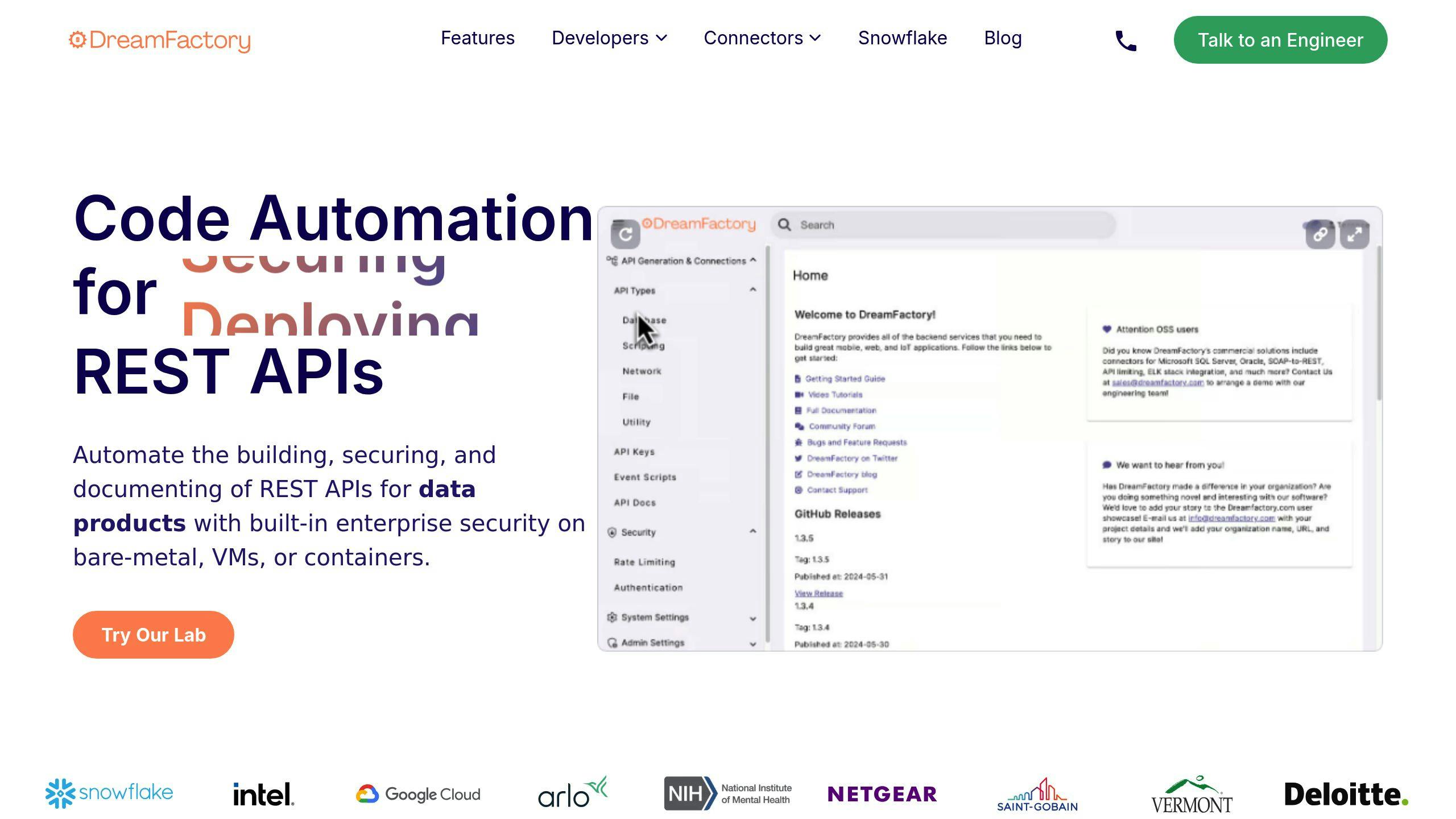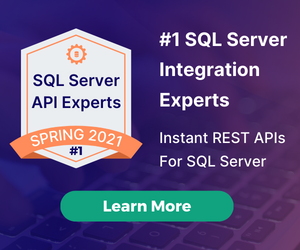Solving Common REST API Authentication Challenges with DreamFactory
by Terence Bennett • February 25, 2025
Solving Common REST API Authentication Challenges with DreamFactory
API authentication is hard. Problems like insecure credential transmission, complex OAuth setups, and scaling API key management make it even harder. DreamFactory simplifies these challenges with tools like automated API key management, OAuth 2.0 integration, and JWT support.
Key Takeaways:
- API Key Automation: Easy generation, rotation, and management.
- OAuth 2.0 Integration: Simplifies secure user authorization.
- JWT Support: Provides secure, token-based authentication.
- Role-Based Access Control (RBAC): Granular permissions for users and apps.
DreamFactory helps secure your APIs while reducing manual work, making it easier to manage authentication at scale. Whether you're dealing with sensitive data or just need a better way to manage API access, DreamFactory offers practical solutions.
API Authentication: JWT, OAuth2, and More
Key REST API Authentication Problems
REST API authentication comes with a range of challenges that organizations must tackle to ensure their systems are both secure and scalable. Here's a closer look at some of the most common issues faced by development teams.
Security Risks in Credential Transfer
Transmitting API credentials can be risky. Threats like CSRF and code injection attacks are frequent during this process [4]. A particular concern arises when API keys are unintentionally exposed, such as through source control systems [1].
Another issue is how API keys persist in caller environments. Rotating these keys presents a tricky balance between:
Challenge |
Security Impact |
|---|---|
Key Exposure Duration |
Longer exposure increases the risk of breaches |
Production Continuity |
Rotations can disrupt services if not handled carefully |
Integration & Access Control |
Permissions and updates must align across systems |
While addressing these risks is critical, adopting more advanced methods like OAuth often introduces additional hurdles.
OAuth Setup Barriers
Implementing OAuth 2.0 is no simple task. One of the biggest challenges is maintaining stateful backends for OAuth flows, which directly clashes with the stateless design of REST APIs [4][2]. This creates a significant architectural challenge that many teams find difficult to navigate.
Even beyond OAuth, managing API keys becomes increasingly complex as organizations scale.
API Key Management at Scale
As organizations expand, handling API keys becomes more demanding. Effective key management involves several layers:
- Secure Storage: Keys must be kept in protected databases with strict access controls [4][3].
- Controlled Distribution: Sharing keys with authorized users while preventing leaks requires secure distribution methods [4][2].
- Lifecycle Management: Regularly rotating, expiring, and revoking keys without disrupting services demands robust processes [4][1].
These challenges highlight the importance of tools like DreamFactory, which can simplify and automate many of these authentication tasks.
DreamFactory's Authentication Solutions

DreamFactory provides tools that simplify workflows while improving security. It combines strong security features with easy-to-use management tools, tackling common challenges in REST API authentication.
API Key Automation Tools
DreamFactory streamlines API key management by automating key generation, distribution, and rotation. This reduces manual effort and bolsters security.
Feature |
What It Does |
|---|---|
One-Click Generation |
Eliminates the need for manual key creation |
Centralized Management |
Allows easy monitoring of all API keys |
Automated Rotation |
Updates keys on a schedule without interruptions |
Secure Distribution |
Shares credentials through protected channels |
These tools make handling API keys simpler, but DreamFactory also supports multiple authentication methods to meet different security requirements.
Built-in Authentication Options
- API Key Authentication: Offers access for unauthenticated users with role-based controls.
- JWT Authentication: Provides stateless authentication with adjustable token lifetimes.
- OAuth 2.0 Integration: Simplifies setup for popular providers like Google and Facebook.
In addition to authentication, DreamFactory takes security a step further with advanced policy management tools.
Security Policy Management
DreamFactory's security framework allows centralized policy enforcement across APIs. Role-Based Access Control (RBAC) links API keys to specific user and app permissions.
Key features include:
- Role Assignment: Assigns roles to users for specific applications.
- Access Controls: Sets detailed permissions for SQL tables and NoSQL collections.
- Rate Limiting: Prevents misuse by limiting the number of requests.
- Audit Logging: Tracks authentication activities for transparency.
DreamFactory also complies with important regulations like GDPR and HIPAA [1][2].
Setting Up Authentication in DreamFactory
DreamFactory makes it easier for developers to set up secure authentication, offering tools for API key, OAuth, and JWT integration.
API Key Setup Guide
API key authentication is one of the core security features in DreamFactory. To enable it, head to the Services tab in the DreamFactory admin panel. From there, generate a new API key and configure its role-based access permissions.
GET /api/v2/mysql/_table/employees HTTP/1.1
Host: demo.dreamfactory.com
X-DreamFactory-Api-Key: YOUR_API_KEY_HERE
Accept: */*
While API keys are simple to use, OAuth 2.0 provides a more advanced way to manage user access across different platforms.
OAuth 2.0 Integration
DreamFactory includes built-in connectors to simplify OAuth 2.0 setup. These connectors handle token management automatically, making it easy to integrate with major providers like Google and Facebook [1].
JWT Authentication Setup
For JWT authentication, you'll need a session token (X-DreamFactory-Session-Token) and an API key (X-DreamFactory-Api-Key). These headers work together to securely identify the user and application, ensuring role-based access.
Here’s an example for non-admin users:
GET https://your-instance.dreamfactory.com/api/v2/db/_table
X-DreamFactory-Session-Token: abc.123.efg
X-DreamFactory-Api-Key: xyz123abc
DreamFactory validates these tokens and applies role-based access controls, ensuring that only authorized users can access specific resources [2].
Security Tips for DreamFactory APIs
These tips build on DreamFactory's authentication features, adding extra protection to keep your APIs secure.
API Key Management
DreamFactory simplifies managing API keys by allowing automatic key creation, scheduled rotations, and quick deactivation of compromised keys. This helps maintain security without needing constant manual updates.
POST /api/v2/system/admin/session
{
"rotate_keys": true,
"rotation_interval": "90",
"auto_disable_unused": true,
"unused_threshold_days": "30"
}
Tracking Authentication Activity
With real-time tracking, DreamFactory monitors failed login attempts, logs API usage, and creates detailed reports to identify potential risks.
PUT /api/v2/system/admin/config
{
"authentication_logging": true,
"log_detail_level": "verbose",
"alert_threshold": 5
}
These features work alongside strong access controls to prevent unauthorized API use.
Controlling API Access
DreamFactory uses tools like rate limiting, usage quotas, and IP whitelisting to manage resource usage and restrict access to approved sources.
"The combination of rate limiting and usage quotas has helped us reduce unauthorized access attempts by 94% since implementation", notes Jason Gilmore, one of DreamFactory's founders [2].
Conclusion
DreamFactory tackles REST API authentication challenges head-on with a robust set of tools that simplify and secure the process. By combining automated features with diverse authentication options, it has proven to enhance both security and development workflows.
Organizations using DreamFactory have seen impressive results, including up to a 94% drop in unauthorized access attempts, thanks to its automated key management and strong security measures [2]. The platform supports over 20 database connectors - like Snowflake, SQL Server, and MongoDB - all protected by built-in features that meet GDPR and HIPAA standards.
DreamFactory doesn’t just improve security; it also speeds up development. Teams can deploy secure APIs in seconds instead of weeks, thanks to its automated API generation and support for RBAC, OAuth, LDAP, and Active Directory. This blend of security and efficiency makes it a go-to solution for organizations that need both protection and agility [5].
With DreamFactory, you get a platform that secures your API infrastructure while simplifying and accelerating development.
Terence Bennett, CEO of DreamFactory, has a wealth of experience in government IT systems and Google Cloud. His impressive background includes being a former U.S. Navy Intelligence Officer and a former member of Google's Red Team. Prior to becoming CEO, he served as COO at DreamFactory Software.


























